EPOPEE CELESTI. Art Brut nella collezione Decharme

© Collection Bruno Decharme | Aloïse Corbaz, Sans titre, Entre 1940 et 1950
Dal 1 March 2024 al 19 May 2024
Roma
Luogo: Accademia di Francia a Roma - Villa Medici
Indirizzo: Viale della Trinità dei Monti 1
Curatori: Bruno Decharme e Barbara Safarova
Telefono per informazioni: +39 06 67611
Sito ufficiale: http://www.villamedici.it
Dal 1° marzo al 19 maggio 2024, l’Accademia di Francia a Roma - Villa Medici presenta la mostra EPOPEE CELESTI. Art Brut nella collezione Decharme, che riunisce una selezione di 180 opere della collezione di Bruno Decharme, una vera e propria panoramica sull’art brut.
Il concetto di art brut è attribuito al pittore francese Jean Dubuffet (Le Havre, 1901 - Parigi, 1985) che a partire dal 1945 diede vita a una collezione di oggetti e opere realizzati da pazienti di ospedali psichiatrici, detenuti, emarginati, solitari, persone “fuori dal sistema”. Questi creatori autodidatti producono senza preoccuparsi dello sguardo degli altri e partecipano alla nascita di nuovi linguaggi, invenzioni o tecniche.
Nel libro L’Art Brut préféré aux arts culturels (L’Art Brut preferita alle arti culturali. Parigi, Galerie René Drouin, 1949), Jean Dubuffet definisce l’art brut come “opere eseguite da persone che non possiedono alcuna cultura artistica, in cui quindi il mimetismo, a differenza di quanto accade tra gli intellettuali, ha un ruolo scarso o assente, per cui gli autori si basano solo (…) sul proprio background e non sui cliché dell'arte classica né sull’arte alla moda. Qui assistiamo all'operazione artistica pura, cruda, reinventata in tutte le fasi dal suo creatore, sulla sola base dei suoi impulsi".
L’art brut ha sempre scosso la storia dell’arte e nutrito spiriti refrattari alle regole, mettendo in discussione non solo le nozioni tradizionali di arte e creazione ma anche quelle di normale e patologico. Ma chi sono gli artisti di questo particolare genere, testimoni di un altro universo, estranei a movimenti e privi di influenze stilistiche? Si tengono, o vengono tenuti, al di fuori della cultura delle belle arti, dei codici e dei luoghi che la costituiscono: scuole, accademie, musei, fiere…
Se il terreno in cui si muove l’art brut è quello dell’“uomo comune all’opera”, come ha affermato Dubuffet, si può anche sostenere che il destino di costui sia fuori dal comune, caratterizzato da un legame tra la Storia e la vita privata dell’artista, in cui diventa impossibile scindere l’uno dall’altro.
Le opere qualificate come art brut, che costituiscono la collezione di Bruno Decharme e che gli anglosassoni definiscono outsider art, danno prova di notevole creatività, in diretto contatto con le anomalie del mondo contemporaneo: guerre, distruzioni, ingiustizie sociali ed economiche, violenza sui minori (Henry Darger), immagini di propaganda e di regimi oppressivi (Ramon Losa, Lázaro Antonio Martínez Durán, Alexander Lobanov).
A volte, l’isolamento, la reclusione o l’esilio spingono l’artista a rifugiarsi in un’esplorazione fantastica dell’universo (Adolf Wölfli), a reinventare un mondo parallelo (Aloïse Corbaz), o a evocare spiriti, fantasmi, creature ibride e bestie mostruose che non hanno mai smesso di popolare il nostro inconscio collettivo.
Figure antropomorfe, geografie intime, disegni talismano, mappe mentali, templi indiani e architetture barocche compongono questo viaggio ai margini raccontato nella mostra. Ai confini dell’immaginario, persi nella realtà, bagnati di stelle, gli “outsider” ridisegnano costantemente i contorni di un universo che inventano a poco a poco. Con le sole bussole della libertà e dell’alterità, raccolgono, accumulano, riempiono, decifrano, scuriscono, distorcono, amplificano, riordinano, costruiscono. Si imbarcano senza filtri in grandi epopee celesti.
L’ossessione e la perseveranza del collezionista Bruno Decharme, che ha dedicato la sua vita a costruire passo dopo passo una delle più importanti collezioni di art brut a livello internazionale, ci invita a mettere in discussione le nostre certezze per provare a rivolgere uno sguardo benevolo sul concetto stesso di creazione, avanzando l’idea che creare un mondo sia creare un’opera.
Il catalogo della mostra è pubblicato dalle edizioni Empire.
Gustavo Giacosa, Notes pour une histoire de l’art brut en Italie (Note per una storia dell’art brut in Italia)
Dal catalogo della mostra
“Se la storia dell’arte italiana è segnata dalla presenza di artisti geniali, non sorprende che la devozione quasi religiosa per la bellezza delle loro opere ci abbia impedito di volgere lo sguardo verso un’arte proveniente dai margini, radicalmente estranea ai loro canoni estetici. Tra le possibili chiavi di lettura, possiamo scegliere quella che lega l’art brut al contesto della storia italiana attraverso due momenti chiave: prima la nascita dei dispositivi e delle istituzioni psichiatriche, poi la loro messa in discussione e abrogazione. […] Nel nostro Paese l’“arte dei pazzi” raccolta da Jean Dubuffet aveva il suo equivalente nella cosiddetta arte pazzesca, come la definiva l’antropologo criminale Cesare Lombroso. Nelle carceri torinesi e negli ospedali psichiatrici del XIX secolo, egli raccolse oggetti e documenti che lo aiutarono a consolidare la sua tesi sull’uomo criminale e la devianza innata. […]
Nei primi decenni del XX secolo non fu solo chi era recluso nei manicomi e nelle carceri a creare queste opere, ma anche artisti disinteressati al riconoscimento ufficiale da parte del mondo dell’arte, [come Simon Rodia]. (…) Nel 1959, alla Galleria d’Arte moderna di Verona, furono esposti per la prima volta in Italia lavori di Adolf Wölfli e Aloïse Corbaz, accanto a opere provenienti dall’atelier dell’ospedale psichiatrico di San Giacomo alla Tomba. […] Il grande interesse per il legame tra espressione artistica eterapia psichiatrica si manifestò tra il 1950 e il 1970 con il proliferare di laboratori in cui venivano proposte diverse attività artistiche a scopo esplicitamente curativo e in una prospettiva riabilitativa. È in questo clima di rispettosa attenzione all’espressione degli altri che ha potuto lavorare pienamente Carlo Zinelli, il primo artista italiano rappresentato nella Collection de l’Art Brut di Losanna. A partire dal 1978, con la promulgazione della legge 180 e la trasformazione di quelli che erano ospedali psichiatrici in strutture aperte, si sono moltiplicati i laboratori creativi. […]
[Oggi] in Italia si percepisce un aumento della sensibilità per l’art brut, grazie a importanti mostre come “The Museum of Everything”, tenutasi alla Pinacoteca Agnelli di Torino nel 2010, o il “Palazzo enciclopedico” della Biennale di Venezia del 2014, ma anche grazie ai lavori di ricerca sul campo. […] Senza aspettare il riconoscimento delle istituzioni culturali, due importanti collezioni private hanno recentemente aperto spazi espositivi e di studio: la Casa dell’Art Brut, a Mairano di Casteggio, e SIC12 artstudio, a Roma. […] La mostra Epopee Celesti a Villa Medici ne è un’ulteriore prova. Contribuisce ad ampliare le nostre prospettive, a indicarci percorsi liberi, gratuiti e disinteressati, sempre controcorrente rispetto alla mercificazione dell’arte globalizzata.”
La collezione Decharme
Questa collezione, avviata alla fine degli anni ’70 e divenuta oggi un punto di riferimento, riunisce quattrocento importanti artisti dell’art brut dal XVIII secolo ai giorni nostri. Nel 1999 Bruno Decharme fonda l’associazione abcd (art brut connaissance & diffusion), un laboratorio di ricerca diretto da Barbara Safarova, il cui lavoro si concretizza nell’organizzazione di mostre, nella pubblicazione di libri e nella produzione di film. Una parte di questa collezione, conservata dalla sua famiglia, è presentata nella mostra Epopee Celesti.
www.abcd-artbrut.net
Il concetto di art brut è attribuito al pittore francese Jean Dubuffet (Le Havre, 1901 - Parigi, 1985) che a partire dal 1945 diede vita a una collezione di oggetti e opere realizzati da pazienti di ospedali psichiatrici, detenuti, emarginati, solitari, persone “fuori dal sistema”. Questi creatori autodidatti producono senza preoccuparsi dello sguardo degli altri e partecipano alla nascita di nuovi linguaggi, invenzioni o tecniche.
Nel libro L’Art Brut préféré aux arts culturels (L’Art Brut preferita alle arti culturali. Parigi, Galerie René Drouin, 1949), Jean Dubuffet definisce l’art brut come “opere eseguite da persone che non possiedono alcuna cultura artistica, in cui quindi il mimetismo, a differenza di quanto accade tra gli intellettuali, ha un ruolo scarso o assente, per cui gli autori si basano solo (…) sul proprio background e non sui cliché dell'arte classica né sull’arte alla moda. Qui assistiamo all'operazione artistica pura, cruda, reinventata in tutte le fasi dal suo creatore, sulla sola base dei suoi impulsi".
L’art brut ha sempre scosso la storia dell’arte e nutrito spiriti refrattari alle regole, mettendo in discussione non solo le nozioni tradizionali di arte e creazione ma anche quelle di normale e patologico. Ma chi sono gli artisti di questo particolare genere, testimoni di un altro universo, estranei a movimenti e privi di influenze stilistiche? Si tengono, o vengono tenuti, al di fuori della cultura delle belle arti, dei codici e dei luoghi che la costituiscono: scuole, accademie, musei, fiere…
Se il terreno in cui si muove l’art brut è quello dell’“uomo comune all’opera”, come ha affermato Dubuffet, si può anche sostenere che il destino di costui sia fuori dal comune, caratterizzato da un legame tra la Storia e la vita privata dell’artista, in cui diventa impossibile scindere l’uno dall’altro.
Le opere qualificate come art brut, che costituiscono la collezione di Bruno Decharme e che gli anglosassoni definiscono outsider art, danno prova di notevole creatività, in diretto contatto con le anomalie del mondo contemporaneo: guerre, distruzioni, ingiustizie sociali ed economiche, violenza sui minori (Henry Darger), immagini di propaganda e di regimi oppressivi (Ramon Losa, Lázaro Antonio Martínez Durán, Alexander Lobanov).
A volte, l’isolamento, la reclusione o l’esilio spingono l’artista a rifugiarsi in un’esplorazione fantastica dell’universo (Adolf Wölfli), a reinventare un mondo parallelo (Aloïse Corbaz), o a evocare spiriti, fantasmi, creature ibride e bestie mostruose che non hanno mai smesso di popolare il nostro inconscio collettivo.
Figure antropomorfe, geografie intime, disegni talismano, mappe mentali, templi indiani e architetture barocche compongono questo viaggio ai margini raccontato nella mostra. Ai confini dell’immaginario, persi nella realtà, bagnati di stelle, gli “outsider” ridisegnano costantemente i contorni di un universo che inventano a poco a poco. Con le sole bussole della libertà e dell’alterità, raccolgono, accumulano, riempiono, decifrano, scuriscono, distorcono, amplificano, riordinano, costruiscono. Si imbarcano senza filtri in grandi epopee celesti.
L’ossessione e la perseveranza del collezionista Bruno Decharme, che ha dedicato la sua vita a costruire passo dopo passo una delle più importanti collezioni di art brut a livello internazionale, ci invita a mettere in discussione le nostre certezze per provare a rivolgere uno sguardo benevolo sul concetto stesso di creazione, avanzando l’idea che creare un mondo sia creare un’opera.
Il catalogo della mostra è pubblicato dalle edizioni Empire.
Gustavo Giacosa, Notes pour une histoire de l’art brut en Italie (Note per una storia dell’art brut in Italia)
Dal catalogo della mostra
“Se la storia dell’arte italiana è segnata dalla presenza di artisti geniali, non sorprende che la devozione quasi religiosa per la bellezza delle loro opere ci abbia impedito di volgere lo sguardo verso un’arte proveniente dai margini, radicalmente estranea ai loro canoni estetici. Tra le possibili chiavi di lettura, possiamo scegliere quella che lega l’art brut al contesto della storia italiana attraverso due momenti chiave: prima la nascita dei dispositivi e delle istituzioni psichiatriche, poi la loro messa in discussione e abrogazione. […] Nel nostro Paese l’“arte dei pazzi” raccolta da Jean Dubuffet aveva il suo equivalente nella cosiddetta arte pazzesca, come la definiva l’antropologo criminale Cesare Lombroso. Nelle carceri torinesi e negli ospedali psichiatrici del XIX secolo, egli raccolse oggetti e documenti che lo aiutarono a consolidare la sua tesi sull’uomo criminale e la devianza innata. […]
Nei primi decenni del XX secolo non fu solo chi era recluso nei manicomi e nelle carceri a creare queste opere, ma anche artisti disinteressati al riconoscimento ufficiale da parte del mondo dell’arte, [come Simon Rodia]. (…) Nel 1959, alla Galleria d’Arte moderna di Verona, furono esposti per la prima volta in Italia lavori di Adolf Wölfli e Aloïse Corbaz, accanto a opere provenienti dall’atelier dell’ospedale psichiatrico di San Giacomo alla Tomba. […] Il grande interesse per il legame tra espressione artistica eterapia psichiatrica si manifestò tra il 1950 e il 1970 con il proliferare di laboratori in cui venivano proposte diverse attività artistiche a scopo esplicitamente curativo e in una prospettiva riabilitativa. È in questo clima di rispettosa attenzione all’espressione degli altri che ha potuto lavorare pienamente Carlo Zinelli, il primo artista italiano rappresentato nella Collection de l’Art Brut di Losanna. A partire dal 1978, con la promulgazione della legge 180 e la trasformazione di quelli che erano ospedali psichiatrici in strutture aperte, si sono moltiplicati i laboratori creativi. […]
[Oggi] in Italia si percepisce un aumento della sensibilità per l’art brut, grazie a importanti mostre come “The Museum of Everything”, tenutasi alla Pinacoteca Agnelli di Torino nel 2010, o il “Palazzo enciclopedico” della Biennale di Venezia del 2014, ma anche grazie ai lavori di ricerca sul campo. […] Senza aspettare il riconoscimento delle istituzioni culturali, due importanti collezioni private hanno recentemente aperto spazi espositivi e di studio: la Casa dell’Art Brut, a Mairano di Casteggio, e SIC12 artstudio, a Roma. […] La mostra Epopee Celesti a Villa Medici ne è un’ulteriore prova. Contribuisce ad ampliare le nostre prospettive, a indicarci percorsi liberi, gratuiti e disinteressati, sempre controcorrente rispetto alla mercificazione dell’arte globalizzata.”
La collezione Decharme
Questa collezione, avviata alla fine degli anni ’70 e divenuta oggi un punto di riferimento, riunisce quattrocento importanti artisti dell’art brut dal XVIII secolo ai giorni nostri. Nel 1999 Bruno Decharme fonda l’associazione abcd (art brut connaissance & diffusion), un laboratorio di ricerca diretto da Barbara Safarova, il cui lavoro si concretizza nell’organizzazione di mostre, nella pubblicazione di libri e nella produzione di film. Una parte di questa collezione, conservata dalla sua famiglia, è presentata nella mostra Epopee Celesti.
www.abcd-artbrut.net
SCARICA IL COMUNICATO IN PDF
COMMENTI

-
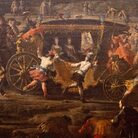 Dal 20 December 2025 al 20 April 2026
Caserta | Reggia di Caserta
Dal 20 December 2025 al 20 April 2026
Caserta | Reggia di Caserta
Regine: trame di cultura e diplomazia tra Napoli e l’Europa
-
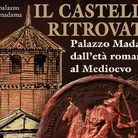 Dal 19 December 2025 al 23 March 2026
Torino | Palazzo Madama - Museo Civico d’Arte Antica
Dal 19 December 2025 al 23 March 2026
Torino | Palazzo Madama - Museo Civico d’Arte Antica
Il castello ritrovato. Palazzo Madama dall’età romana al medioevo
-
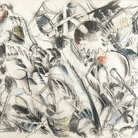 Dal 17 December 2025 al 19 January 2026
Roma | Palazzo della Cancelleria
Dal 17 December 2025 al 19 January 2026
Roma | Palazzo della Cancelleria
De Humana Mensura di Linda Karshan
-
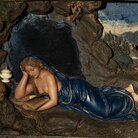 Dal 18 December 2025 al 12 April 2026
Firenze | Gallerie degli Uffizi
Dal 18 December 2025 al 12 April 2026
Firenze | Gallerie degli Uffizi
Cera una volta. Sculture dalle collezioni medicee
-
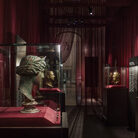 Dal 11 December 2025 al 9 April 2026
Firenze | Museo Archeologico Nazionale di Firenze
Dal 11 December 2025 al 9 April 2026
Firenze | Museo Archeologico Nazionale di Firenze
Icone di Potere e Bellezza
-
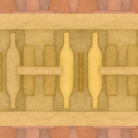 Dal 11 December 2025 al 11 January 2026
Roma | Palazzo Esposizioni Roma
Dal 11 December 2025 al 11 January 2026
Roma | Palazzo Esposizioni Roma
Giorgio Morandi nella Collezione Eni. Un viaggio attraverso la storia culturale del cane a sei zampe e l’eredità di Enrico Mattei


